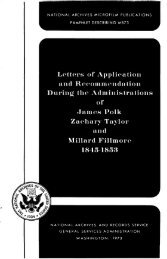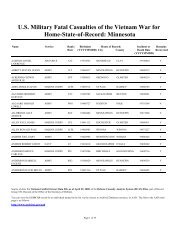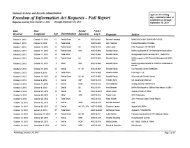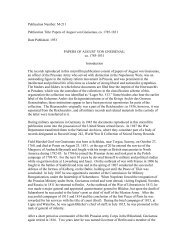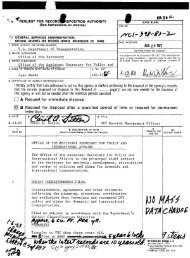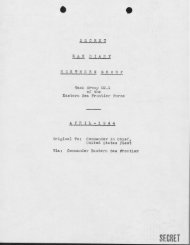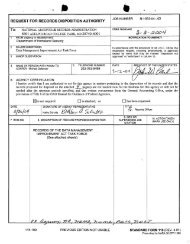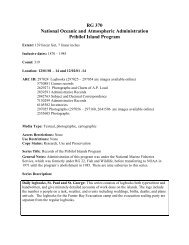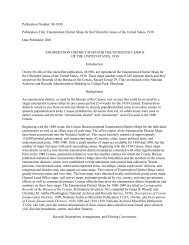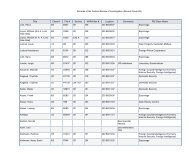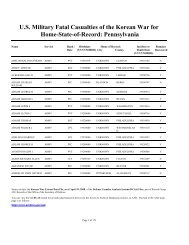HITLER'S SHADOW - National Archives and Records Administration
HITLER'S SHADOW - National Archives and Records Administration
HITLER'S SHADOW - National Archives and Records Administration
Create successful ePaper yourself
Turn your PDF publications into a flip-book with our unique Google optimized e-Paper software.
The Bruderschaft’s effect was marginal, but the threat it represented<br />
for Atlantic security earned it close surveillance by the U.S. Army<br />
Counterintelligence Corps (CIC), which discovered the organization after its<br />
first meeting in Hamburg in July 1949. The CIC quickly developed sources<br />
within the organization. Some 1,500 to 2,000 new pages on the Bruderschaft<br />
have now been released. CIC surveillance revealed how badly compromised<br />
some of its leaders were, while revealing a fuller picture of the organization’s<br />
overall strategy <strong>and</strong> personality feuds.<br />
The Bruderschaft had two leaders. One was SS Col. Alfred Franke-Gricksch.<br />
He joined the Nazi Party in 1926 <strong>and</strong> the SS in 1935. He served as an intelligence<br />
officer in the SS Death’s Head Division in 1939 <strong>and</strong> in 1943 moved to the Reich<br />
Security Main Office (RSHA) Personnel Office (Amt I) first as Personal Adjutant<br />
to Maximilian von Herff <strong>and</strong> then as the head of the office. In 1943 Franke-<br />
Gricksch traveled through occupied Pol<strong>and</strong>, visiting the camps of Auschwitz<br />
<strong>and</strong> Maidanek <strong>and</strong> witnessing the suppression of the Warsaw Ghetto uprising.<br />
He marveled at the wealth collected from Jewish ghettos as well as Auschwitz’s<br />
efficiency in disposing of Jews. 2 Even in April 1945 he remained a true believer<br />
calling for a renewal of Nazi concepts, this time by a group of elite leaders rather<br />
than a single man. 3 He was in British captivity from 1945 to 1948, during which<br />
time he provided information for MI6. 4 He then returned to his castle near<br />
Bielefeld <strong>and</strong> worked to implement his vision through the political system.<br />
The other leader was Maj. Helmut Beck-Broichsitter, an ex-staff officer from<br />
the Grossdeutschl<strong>and</strong> division, who had a reputation as “one of the best qualified<br />
young General Staff [sic] Officers in the German Army.” 5 Beck-Broichsitter<br />
joined the Army in August 1939, serving in Pol<strong>and</strong>, France, Greece, <strong>and</strong> the<br />
USSR. But he joined the Nazi Party in 1931, was a member of the SA in 1932,<br />
<strong>and</strong> a member of the police until 1939. As an Army officer from 1939 to 1944,<br />
he served in a variety of field gendarme units, which helped to combat partisans<br />
behind German lines. This placed him in the category of automatic arrest. 6<br />
Other leaders in the Bruderschaft were more notorious. Karl Kaufmann was<br />
one of the Nazi Party’s earliest members (1922). He was the party Gauleiter in<br />
Hamburg from 1929 to 1945 <strong>and</strong> Hamburg’s governor (Reichsstatthalter) from<br />
1933 to 1945. From a stolen Jewish villa, he ran one of Germany’s most corrupt<br />
administrations, wherein Jewish property <strong>and</strong> capital rewarded supporters. In<br />
54 | The CIC <strong>and</strong> Right-Wing Shadow Politics



